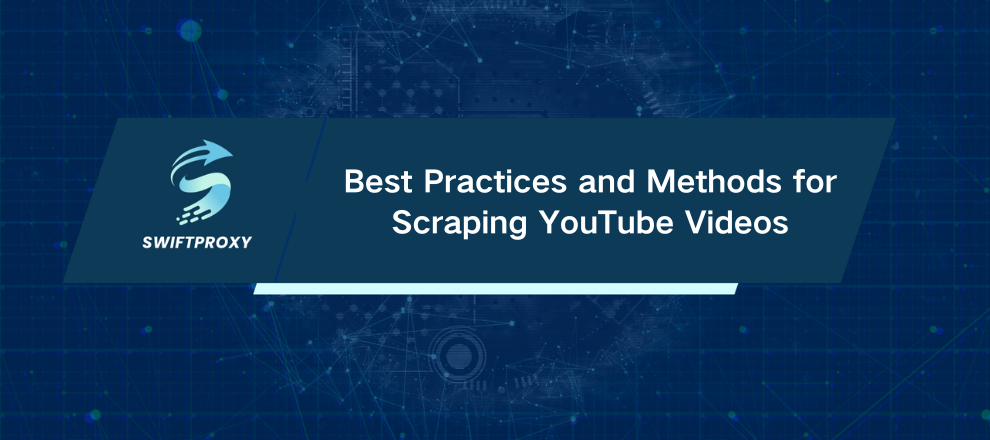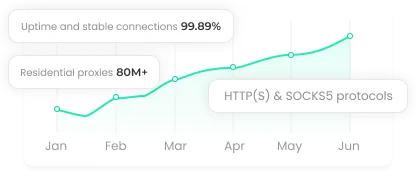Best Practices and Methods for Scraping YouTube Videos
Every minute, YouTube sees a massive influx of new videos. That’s a huge pool of content—and an even bigger chance for those who know how to leverage it. Each view, like, and comment carries insights that can inform your content strategy, spot trends, and give you an edge over competitors. Doing this by hand? Practically impossible. This is exactly why YouTube data scraping is such a game-changer. In this guide, we’ll show you exactly how to scrape YouTube videos effectively, explore the best tools for the job, and share actionable tips to scale your efforts safely and efficiently.

What YouTube Data Scraping Means
YouTube data scraping is the process of extracting structured information from videos, channels, or playlists using automated tools. Think video titles, views, likes, comments, descriptions—all organized in a way that's easy to analyze.
In short, a YouTube scraper automates data collection at scale. Instead of manually combing through hundreds of videos, you can pull the data you need in minutes. For businesses, marketers, and researchers, this isn't just a convenience—it's a game-changer.
Why You Should Consider Scraping YouTube Data
YouTube is the world's second-largest search engine and a hub of audience insights. Scraping its data lets you:
Analyze Competitor Videos: Understand what's working for others, identify gaps, and refine your content strategy.
Spot Emerging Trends: Stay ahead of the curve by tracking what's gaining traction in your niche.
Measure Engagement: Collect likes, shares, and comments to gauge audience sentiment.
Boost SEO: Analyze keywords, tags, and descriptions to optimize your videos for search.
With the right approach, you can gather all this in bulk—saving time, reducing guesswork, and creating strategies that actually work.
Reliable Tools for Scraping YouTube Videos
1. YouTube API
YouTube's own API gives you programmatic access to video stats, comments, and metadata.
Pros:
Official and reliable
Structured output
Free within usage limits
Cons:
Rate limits restrict data volume
Some real-time data may be inaccessible
Use it when you want official, structured data without building a scraper from scratch.
2. Scraping Libraries and Tools
For more flexibility, Python libraries and frameworks like BeautifulSoup, Selenium, and Scrapy let you pull data directly from YouTube pages.
Pros:
Full control over what you scrape
Extract data beyond API limits
Open-source and highly customizable
Cons:
Requires technical know-how
Risk of IP blocks or rate limits
This is ideal if you need deep, customized data collection.
3. Third-Party Scraping Services
Want to skip coding? Third-party services handle scraping for you, often with proxy rotation and automated data storage.
Pros:
No coding required
Large-scale scraping capability
Built-in features like proxy rotation and CAPTCHA handling
Cons:
Paid service
Some data limitations may apply
Great for teams that want efficiency without technical overhead.
Tips for YouTube Data Scraping
Leverage Proxies for Large-Scale Scraping
Too many requests from one IP? You'll get blocked. Rotate IPs with a quality proxy service to stay under YouTube's radar.
Adhere to Terms of Service
Scraping responsibly matters. Don't overload YouTube's servers. Stick to rate limits. Avoid scraping sensitive user data.
Filter for Relevant Data
Focus only on what matters—views, comments, keywords, or metadata. Less clutter, faster processing.
Handle CAPTCHAs Smartly
YouTube uses CAPTCHAs to prevent bots. Make sure your scraper or service can bypass them without raising flags.
Scrape Ethically
Avoid aggressive scraping. Respect privacy. Collect data to gain insights, not to spam or harass.
How Swiftproxy Enhances YouTube Scraping
Avoid IP Blocks: Rotate IPs to distribute requests and reduce bot detection.
Scrape at Scale: Pull massive amounts of data without hitting limits.
Maintain Anonymity: Keep your scraping activities private with IP switching.
CAPTCHA Handling: Intelligent processing ensures smooth access to data.
Global Access: Reach YouTube content from multiple geographies seamlessly.
24/7 Support: Expert help whenever you need it.
If you're serious about collecting YouTube data at scale, tools like Swiftproxy turn a tedious task into a streamlined workflow.
Conclusion
YouTube isn't just a platform—it's a data goldmine. Scraping it efficiently can unlock insights that drive content strategy, improve SEO, and keep you ahead of competitors. Use the right tools, follow best practices, and leverage services like Swiftproxy to scale safely. The result? Faster decisions, smarter strategies, and real results.

















































